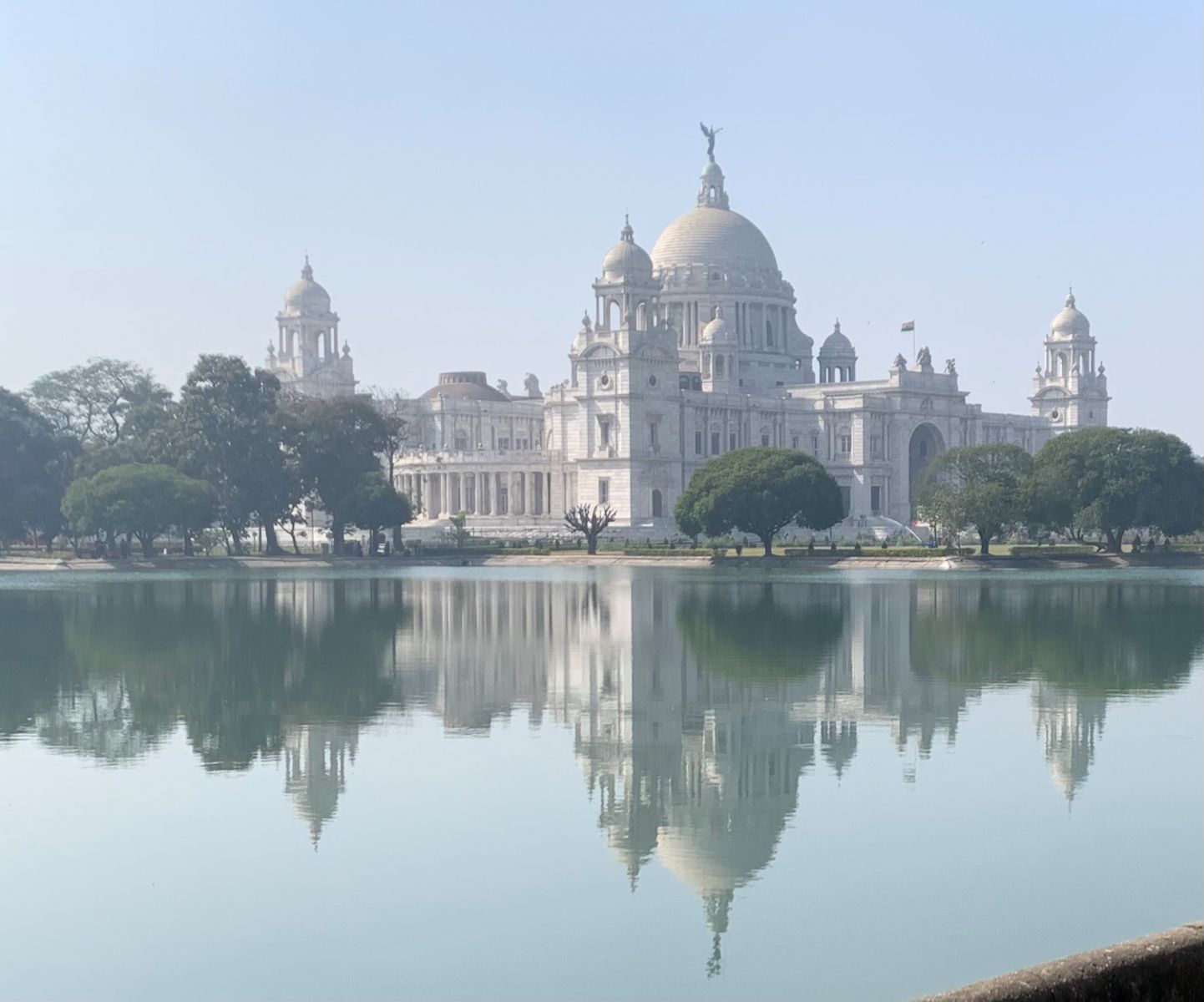“Taj of the Raj:” New Perspectives on Victoria Memorial Hall

"Taj of the Raj:" New Perspectives on Victoria Memorial Hall
By FRANK RIZZO
“There is intense interest in art, architecture and their colonial histories in India right now,” says Tim Barringer, the Paul Mellon Professor in the History of Art Department. “Decolonizing museums and collections is a priority worldwide,”
Barringer is co-convening with Romita Ray (Syracuse University) an interdisciplinary symposium at Yale which will offer new critical perspectives on the history, architecture and collections of the Victoria Memorial Hall, an imposing marble building in Kolkata, India begun in 1906, when the city was the capital of British India, and opened in 1921.
Set amidst 64 acres of spectacular gardens, the museum complex was a monument to Queen Victoria, empress of India from 1876 to 1901, the year of her death. It was the brainchild of arch-imperialist Lord Curzon, Viceroy of India from 1899 to 1905. It remains the most visited museum of the Indian subcontinent.
The symposium has grown out of a 10-day research workshop convened at the Victoria Memorial in January 2023. Funded by the National Endowment for the Humanities (NEH) and Syracuse University, the workshop was organized by Ray, a Yale alumna (MA ’94; PhD ’99), in collaboration with Jayanta Sengupta, former director of the Victoria Memorial Hall, who is a part of the symposium. For Ray, who was born and brought up in Calcutta (now Kolkata), the Victoria Memorial is entrenched in the histories of an erstwhile colonial city and the politics of post-Independence India. It is local, national, as well as global.
“Taj of the Raj: The Victoria Memorial Hall, Kolkata” will be held Friday, Sept. 15 to Sunday, Sept. 18. The program is available here. The symposium, which will draw together leading scholars from India, the UK and USA, is free and open to the public.
Barringer compares the Memorial’s significance to the city of Kolkata to the Taj Mahal’s importance to the city of Agra — but one with colonial complexities.
“This grandiose institution is a monument to an empire that no longer exists,” says Barringer, “Still an important landmark in Kolkata, its role has changed.”
The marble-clad museum and its 25 galleries, its extensive outdoor sculptures and beautiful gardens are beloved by the people of Kolkata today, he says, with the garden acting as an urban oasis, a place for families, courting lovers and serenity-seeking citizens, for whom its colonial associations seem largely forgotten.
The museum’s collections form a visual legacy of the British Raj, and include European paintings; colonial sculpture; historic photographs; textiles; Mughal, Rajput and Bengal School paintings; colonial furniture; and musical instruments.
“It was a collection intended for and to celebrate the city of Kolkata and its importance for the history of the British empire,” says Barringer. “It’s not a museum of British art but rather a museum of British India. After three quarters of a century of independence, that history remains fraught.”
Recently, a new wave of political and social dynamics have come into play. ”It’s an explosive collection ideologically now and I think we’re at a tipping point in the way the museum is understood,” he says. “Globally, museums have emerged as a subject of discussion, debate and political questioning; so a colonial museum with its architecture, monuments and collections intact is absolutely at the core of current intellectual concerns and critiques.”
Though it’s one of the word’s most stunning landmarks, there is a need for new scholarship about the Memorial. “The relationship between colonialism and art history has moved on so much in the last decade that there is a need for a theoretically astute and methodologically up-to-date account of this very visible representation of colonial history.”
Even the outdoor environment can have multiple layers of meanings. “The gardens were absolutely central to the idea of this place,” says Barringer, noting that the British created the surrounding acres for their own study of horticulture, landscape and botanical research.
In the grounds can be seen echoes of both English parkland traditions and the subtle geometric gardens of the Mughal dynasty, which ruled much of the Indian subcontinent before the British. “The Mughals were great patrons of the arts and had a very refined and rarified cultured traditions of gardening. So you can interpret the gardens either way. The Victoria Memorial is many things at once: a place for leisure, a place of beauty, a place for science. It’s British. It’s Indian.”

Revisiting the Victoria Memorial in the light of its centenary celebrations in 2021 offers the opportunity to reassess the Memorial’s Indian legacy, while challenging us to examine how Kolkata continues to redefine the city’s iconic landmark. It makes us ask: what does it mean to decolonize imperial histories in former colonies like India?
“Museums today sit on an ideological fault line,” says Barringer. ” It’s an earthquake waiting to happen — and this is why this [question] is urgent.”
Participants will also include: Rimli Bhattacharya, University of Delhi; Manas Bhaumik, Botanical Survey of India, Kolkata; Swati Chattopadhyay, UC Santa Barbara; Edward Cooke, Yale University; Caroline Cornish, Royal Botanic Gardens, Kew; Vinita Damodaran, University of Sussex; Anshuman Dasgupta, Visva Bharati University, Santiniketan; Adam Eaker, The Metropolitan Museum of Art; Durba Ghosh, Cornell University; Tapati Guha-Thakurta, Centre for Studies in Social Sciences, Calcutta; Margot Finn, University College, London; Michael Hatt, University of Warwick; Annu Jalais, Krea University; Nilina Deb Lal, Heritage Consultant, Kolkata; Joanna Marschner, Historic Royal Palaces, UK; Sumathi Ramaswamy, Duke University; Jayanta Sengupta, Victoria Memorial Hall; Holly Shaffer, Brown University; Yuthika Sharma, Northwestern University.
The symposium, which will be held at the Loria Center for the History of Art LORIA, Room 351, 190 York St., is supported by the National Endowment for the Humanities, The Edward J. and Dorothy Clarke Kempf Memorial Fund and The Whitney and Betty MacMillan Center for International and Area Studies, Yale University, and Syracuse University. Tea for the symposium is sponsored by The Republic of Tea.
